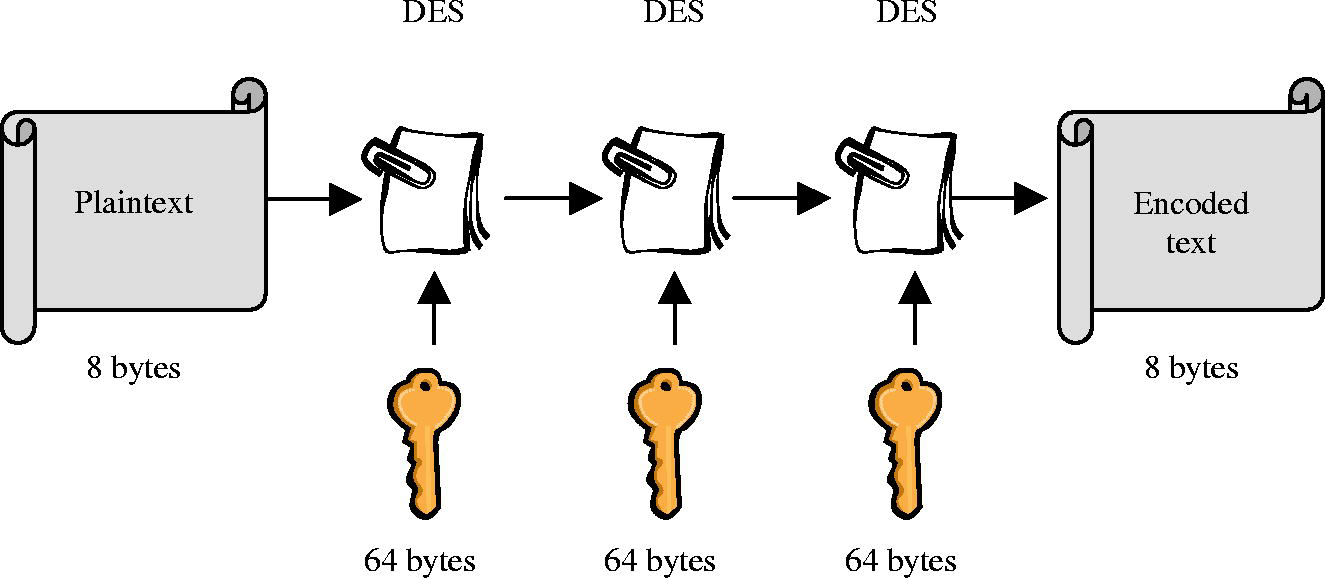Farewell, Triple DES: A Legacy Retires and the Future of Encryption Beckons
 Basheer Ahamed
Basheer Ahamed
The year is 2023, and a stalwart of the encryption world is taking its final bow. Triple DES, also known as TDEA, has served us well for decades, safeguarding sensitive data from prying eyes. But times change, and even the mightiest algorithms eventually find their match in the relentless march of computing power. As we approach the end of December, it's time to say goodbye to TDEA and prepare for the dawn of a new era in cryptography.
Why the Retirement?
TDEA's strength lay in its triple-layered encryption, essentially applying the Data Encryption Standard (DES) algorithm three times over. While this provided robust security in its time, advancements in computing have made it increasingly vulnerable to brute-force attacks. With dedicated hardware, cracking a TDEA key is no longer a theoretical exercise, but a real possibility.
The Forbidden Zone: Storage
Therefore, the National Institute of Standards and Technology (NIST) has declared TDEA officially deprecated for storage of sensitive data after December 31st, 2023. This means it's no longer considered "strong cryptography" and should not be used to protect data at rest.
Transmission: A Narrow Window
For transmission of sensitive data, like payment card information (PAN), a small window of opportunity remains. TDEA may still be used, but only under specific circumstances:
In conjunction with a secure key management system: Frequent key rotations are crucial to maintain security.
As part of a validated protocol: Like DUKPT (Dynamic Unpredictable Key Transaction Processing), which adds an extra layer of protection.
Moving Forward: The Landscape of Encryption
While TDEA's retirement might feel like a loss, it's important to remember that it's paving the way for more robust and future-proof algorithms. Strong contenders include AES-256, which offers significantly higher encryption strength, and quantum-resistant algorithms, preparing us for the technological shift on the horizon.
Preparing for the Transition
If you're still relying on TDEA, the time to act is now. Here are some steps you can take:
Conduct an inventory: Identify all systems and applications using TDEA.
Develop a migration plan: Prioritize critical systems and choose appropriate replacements for each use case.
Implement and test the new solutions: Ensure everything is working seamlessly before the deadline.
Remember, cryptography is an ongoing dance between protecting information and staying ahead of evolving threats. Saying goodbye to TDEA is not just about nostalgia, but a necessary step towards a more secure future. Embrace the change, explore the possibilities, and keep your data safe in the ever-evolving digital landscape.
Let's discuss! What are your thoughts on TDEA's retirement? What challenges do you face in the transition to newer algorithms? Share your experiences and questions in the comments below. Together, we can navigate this cryptographic evolution and continue to safeguard our valuable information.
Subscribe to my newsletter
Read articles from Basheer Ahamed directly inside your inbox. Subscribe to the newsletter, and don't miss out.
Written by

Basheer Ahamed
Basheer Ahamed
PCI DSS SME